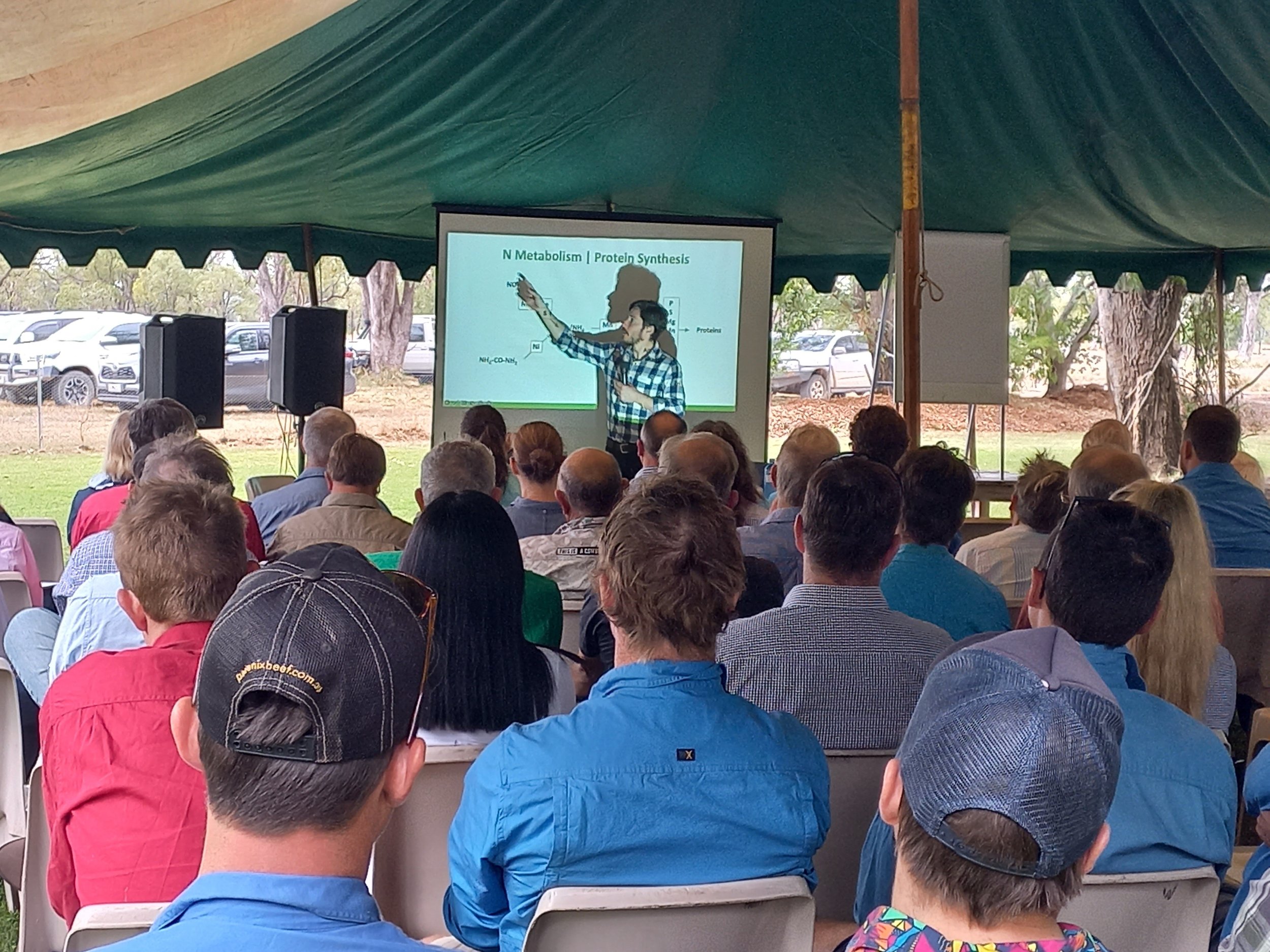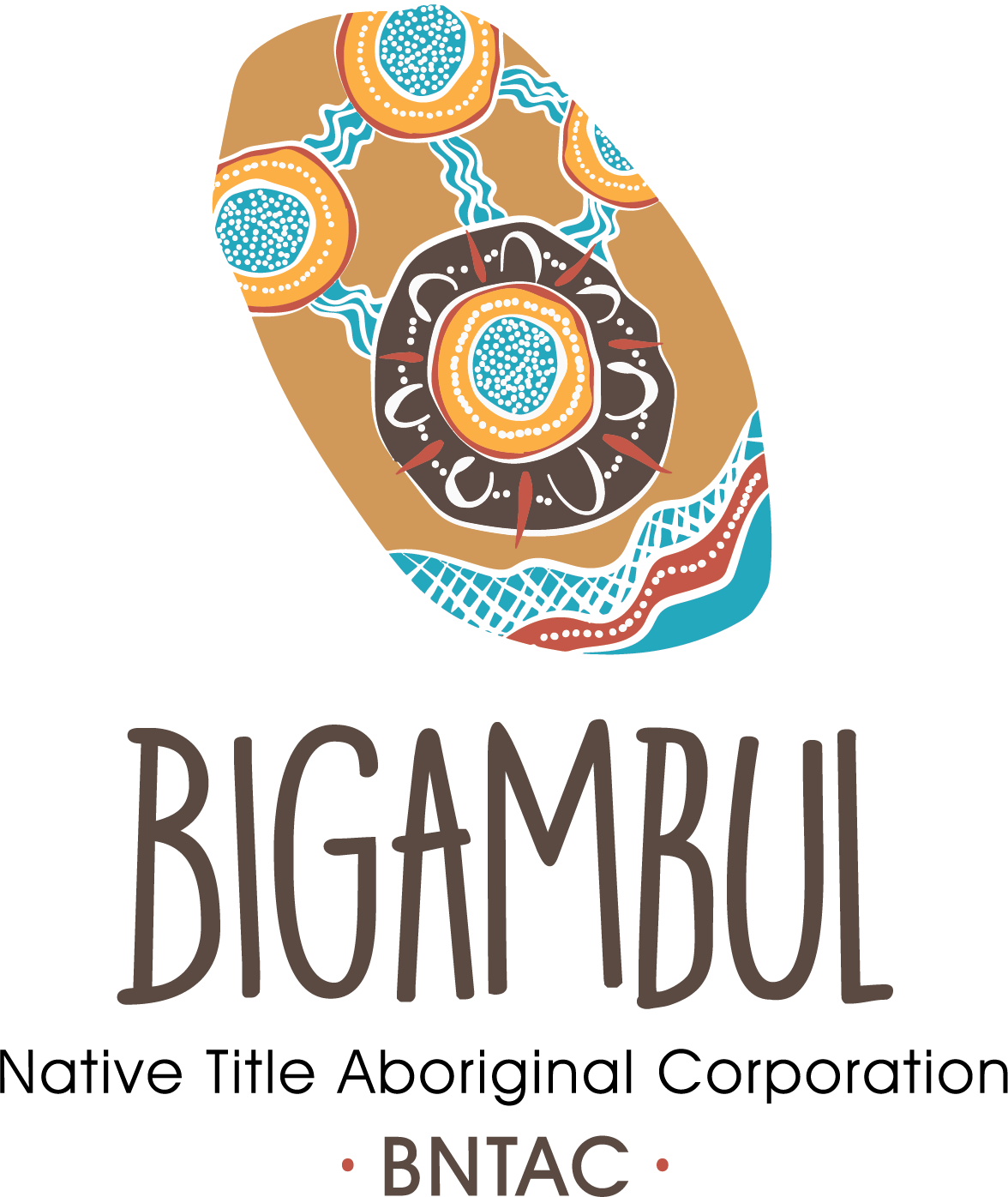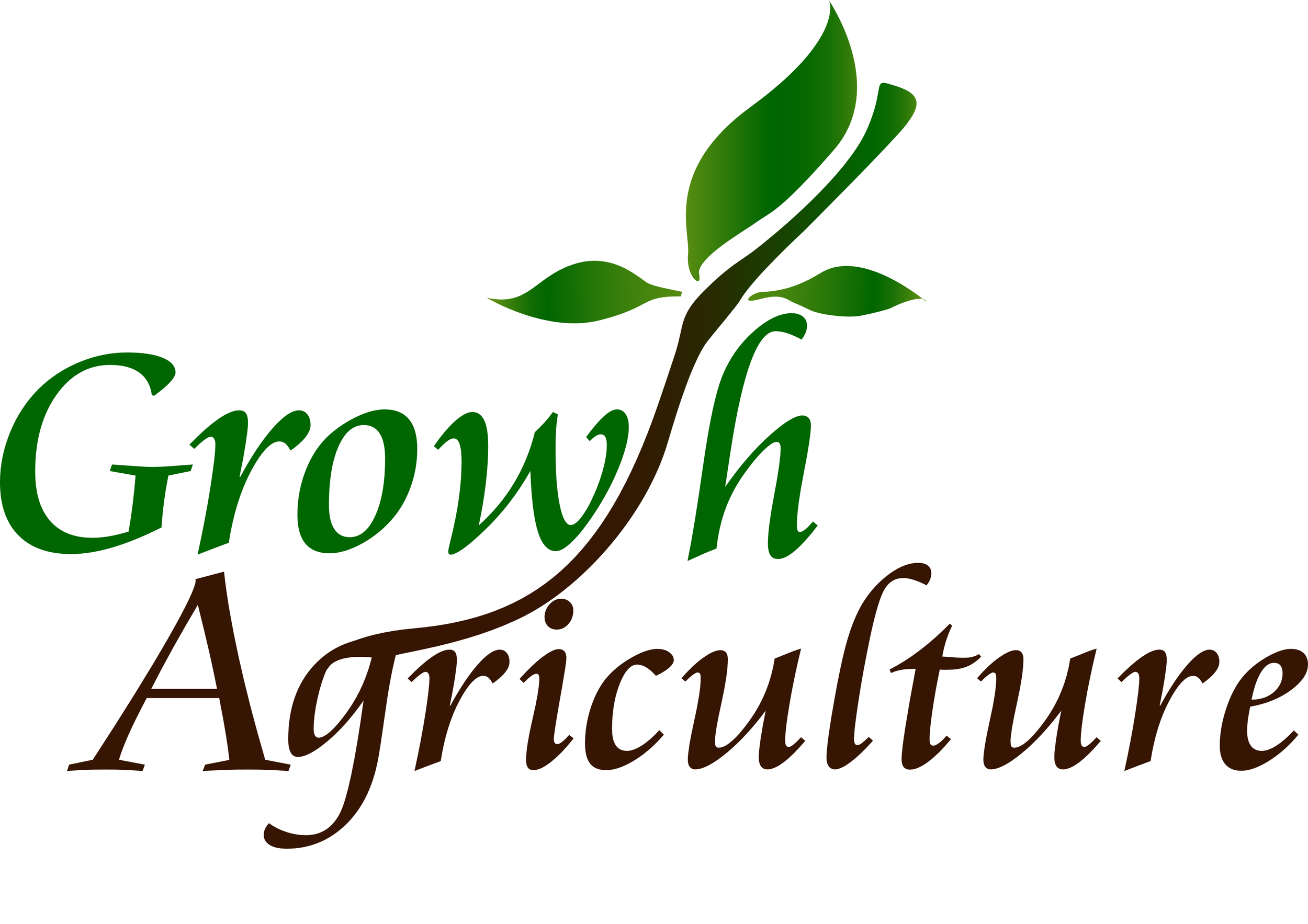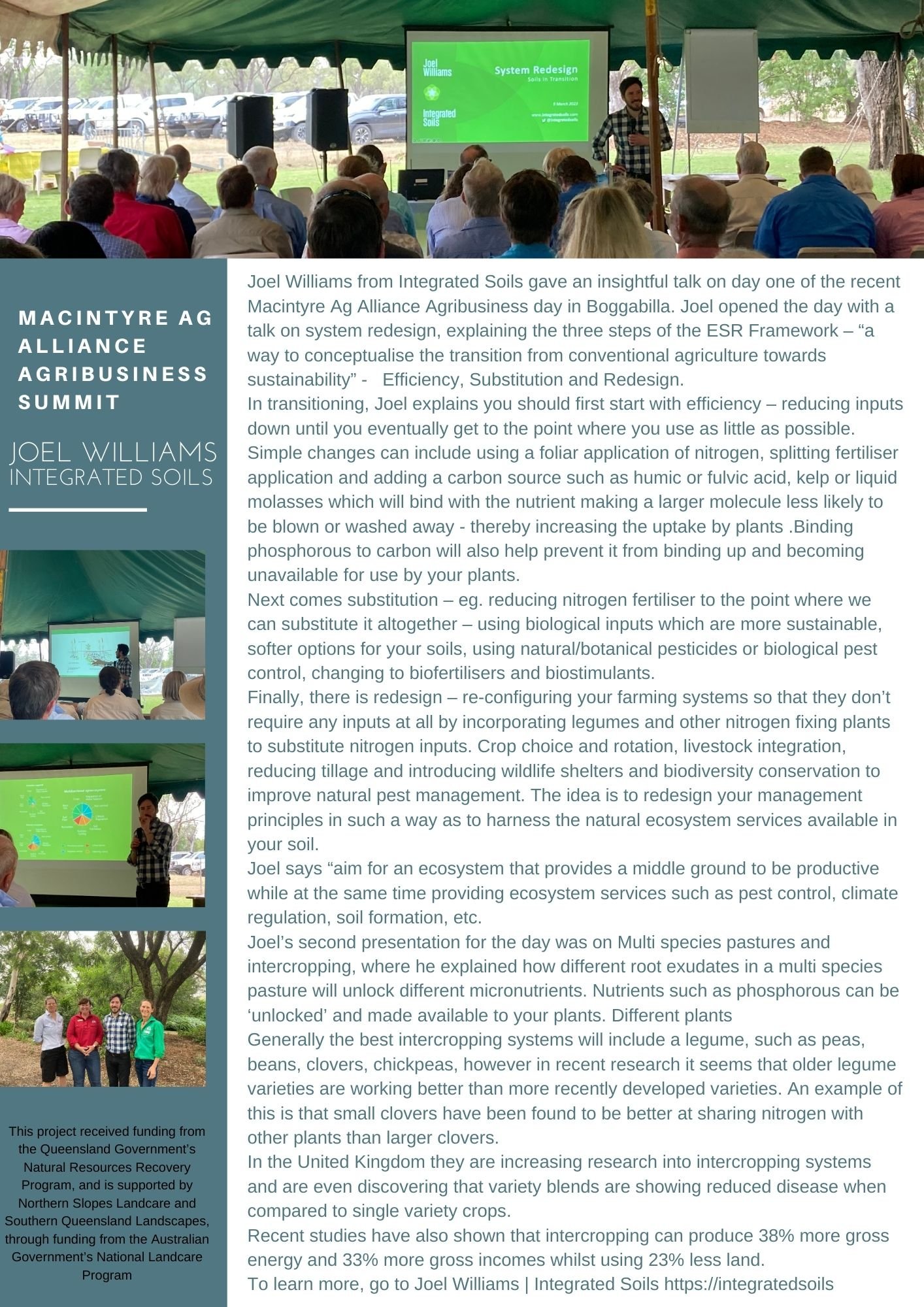Agribusiness Summit 2023 - JOEL WILLIAMS
Joel Williams from Integrated Soils gave an insightful talk on day one of the recent Macintyre Ag Alliance Agribusiness Summit field day in Boggabilla. Joel opened the day with a breakfast presentation on system redesign, explaining the three steps of the ESR Framework – “a way to conceptualise the transition from conventional agriculture towards sustainability” - Efficiency, Substitution and Redesign.
In transitioning, Joel explains you should first start with efficiency – reducing inputs down until you eventually get to the point where you use as little as possible. Simple changes can include using a foliar application of nitrogen, splitting fertiliser application and adding a carbon source such as humic or fulvic acid, kelp or liquid molasses which will bind with the nutrient making a larger molecule less likely to be blown or washed away - thereby increasing the uptake by plants . Binding phosphorous to carbon will also help prevent it from binding up and becoming unavailable for use by your plants.
Next comes substitution – eg. reducing nitrogen fertiliser to the point where we can substitute it altogether – using biological inputs which are more sustainable, softer options for your soils, using natural/botanical pesticides or biological pest control, changing to biofertilisers and biostimulants.
Finally, there is redesign – re-configuring your farming systems so that they don’t require any inputs at all by incorporating legumes and other nitrogen fixing plants to substitute nitrogen inputs. Crop choice and rotation, livestock integration, reducing tillage and introducing wildlife shelters and biodiversity conservation to improve natural pest management. The idea is to redesign your management principles in such a way as to harness the natural ecosystem services available in your soil.
Joel says “aim for an ecosystem that provides a middle ground to be productive while at the same time providing ecosystem services such as pest control, climate regulation, soil formation, etc.
Joel’s second presentation for the day was on Multi species pastures and intercropping, where he explained how different root exudates in a multi species pasture will unlock different micronutrients. Nutrients such as phosphorous can be ‘unlocked’ and made available to your plants. Different plants
Generally the best intercropping systems will include a legume, such as peas, beans, clovers, chickpeas, however in recent research it seems that older legume varieties are working better than more recently developed varieties. An example of this is that small clovers have been found to be better at sharing nitrogen with other plants than larger clovers.
In the United Kingdom they are increasing research into intercropping systems and are even discovering that variety blends are showing reduced disease when compared to single variety crops.
Recent studies have also shown that intercropping can produce 38% more gross energy and 33% more gross incomes whilst using 23% less land.
This event was supported by Northern Slopes Landcare and Southern Queensland Landscapes, through funding from the Australian Government’s National Landcare Program.
To learn more, go to Joel Williams | Integrated Soils










